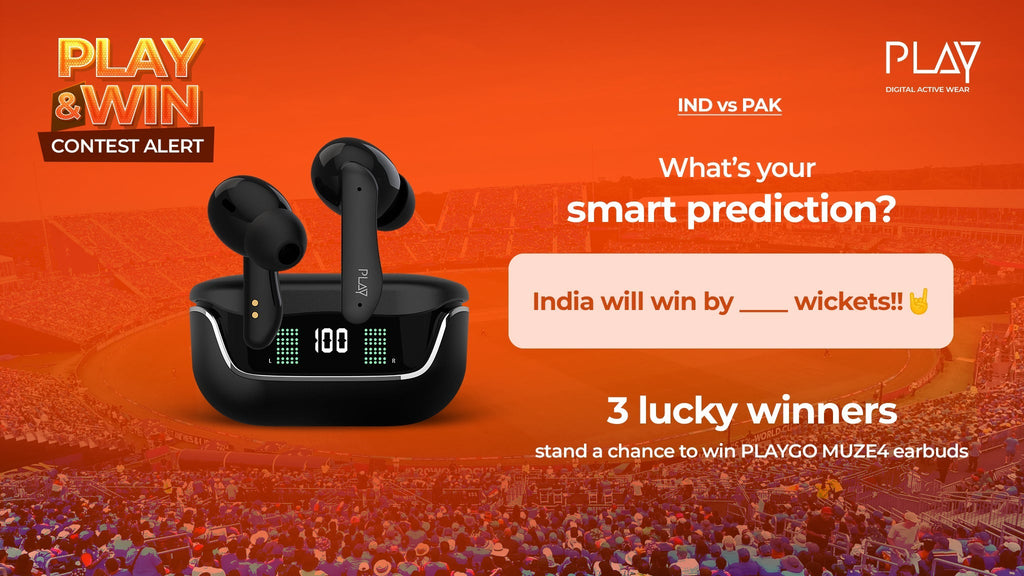

Things to consider before you buy wireless headphones for running
Jogging. It's arguably the most basic and inexpensive kind of exercise ever devised. All you need are a good pair of athletic shoes and a route to get started.
However, if you want to enhance your run with music and high-quality audio, you'll need a good pair of running headphones. There are so many pairs on the market that deciding where to begin might be difficult.
Running earphones and headsets must feel comfortable, be water-resistant, and have inbuilt safety features if you're running outside. While wired headphones are still an option, wireless headphones are more convenient.
Headphone style
First and foremost, what type of headphone do you prefer? Running headphones are available in a variety of styles and sizes. You could go with wired headphones, which come in in-ear, on-ear, and over-ear styles. You might even opt with a wireless pair for the maximum in convenience. In-ear running headphones are also divided into two types: standard wireless and true wireless.
On- and over-ear headphones are larger and bulkier than in-ear headphones, and you'll need a tighter grip on the earpads to keep them from sliding around. Traditional wireless in-ear headphones feature a cable that links the two earbuds and runs up the back of your neck. Many may not like the feeling of a cable bouncing on their neck when they run, thus this style can be unpopular. However, a good pair should be so comfortable that you don't even notice. Like our PLAYGO N33 or PLAYGO N82 series.
Water Resistance
Jogging causes you to sweat. Unlike your running clothes, you can't throw your headphones in the washing machine. However, some people are more sweat and water resistant than others.
Most people will be satisfied with simple sweat resistance. However, if you want to exercise in the rain not having to worry about your headphones breaking, opt for splash proof.
The degree of waterproofing is determined by an IP rating. You'll notice something along the lines of IP67. Solid particle protection (i.e. sand and dust) is indicated by the first digit (in this case the 6). The second digit (in this case, 7) denotes liquid ingress protection, i.e. water resistance. Spray-proofing is rated 3; splash-proofing is rated 4; water jets are rated 5 and 6; and full immersion upto 1m is rated 7.
Fit and comfort
A comfortable fit is critical when choosing a pair of running headphones. They need to stay put when you're racking up the kilometres, after all. And the last thing you need is to stop and look for a lost earphone in the mud.
Ear tips come in a variety of sizes with most running headphones. Because everyone's ears are different, don't expect them to fit perfectly right away.
If you're looking for on/over-ear headsets or in-ear earphone, a stable fit means something different. In either case, as your head bounces up and down during a run, the audio device should stay in or on your ears. However, this can lead to headphones that are uncomfortable to use for long periods of time, but for one-hour runs, comfort should suffice.
Controls
Touch controls are all the hot aspects now, but they can be a mixed blessing. While they are equally cool, they are vastly different in terms of reactivity and sensitivity. They can also be programmed such that different combinations of tapping control different capabilities, like noise cancellation and volume levels.
Noise Cancellation feature
Some wireless earbuds have a noise-canceling feature that can effectively minimize background noise. Since noise-canceling technology consumes batteries, you won't get very long listening durations, and the earpieces may be quite wide to accommodate the larger size batteries required by the circuitry.
However, if you want to enhance your run with music and high-quality audio, you'll need a good pair of running headphones. There are so many pairs on the market that deciding where to begin might be difficult.
Running earphones and headsets must feel comfortable, be water-resistant, and have inbuilt safety features if you're running outside. While wired headphones are still an option, wireless headphones are more convenient.
Headphone style
First and foremost, what type of headphone do you prefer? Running headphones are available in a variety of styles and sizes. You could go with wired headphones, which come in in-ear, on-ear, and over-ear styles. You might even opt with a wireless pair for the maximum in convenience. In-ear running headphones are also divided into two types: standard wireless and true wireless.
On- and over-ear headphones are larger and bulkier than in-ear headphones, and you'll need a tighter grip on the earpads to keep them from sliding around. Traditional wireless in-ear headphones feature a cable that links the two earbuds and runs up the back of your neck. Many may not like the feeling of a cable bouncing on their neck when they run, thus this style can be unpopular. However, a good pair should be so comfortable that you don't even notice. Like our PLAYGO N33 or PLAYGO N82 series.
Water Resistance
Jogging causes you to sweat. Unlike your running clothes, you can't throw your headphones in the washing machine. However, some people are more sweat and water resistant than others.
Most people will be satisfied with simple sweat resistance. However, if you want to exercise in the rain not having to worry about your headphones breaking, opt for splash proof.
The degree of waterproofing is determined by an IP rating. You'll notice something along the lines of IP67. Solid particle protection (i.e. sand and dust) is indicated by the first digit (in this case the 6). The second digit (in this case, 7) denotes liquid ingress protection, i.e. water resistance. Spray-proofing is rated 3; splash-proofing is rated 4; water jets are rated 5 and 6; and full immersion upto 1m is rated 7.
Fit and comfort
A comfortable fit is critical when choosing a pair of running headphones. They need to stay put when you're racking up the kilometres, after all. And the last thing you need is to stop and look for a lost earphone in the mud.
Ear tips come in a variety of sizes with most running headphones. Because everyone's ears are different, don't expect them to fit perfectly right away.
If you're looking for on/over-ear headsets or in-ear earphone, a stable fit means something different. In either case, as your head bounces up and down during a run, the audio device should stay in or on your ears. However, this can lead to headphones that are uncomfortable to use for long periods of time, but for one-hour runs, comfort should suffice.
Controls
Touch controls are all the hot aspects now, but they can be a mixed blessing. While they are equally cool, they are vastly different in terms of reactivity and sensitivity. They can also be programmed such that different combinations of tapping control different capabilities, like noise cancellation and volume levels.
Noise Cancellation feature
Some wireless earbuds have a noise-canceling feature that can effectively minimize background noise. Since noise-canceling technology consumes batteries, you won't get very long listening durations, and the earpieces may be quite wide to accommodate the larger size batteries required by the circuitry.


